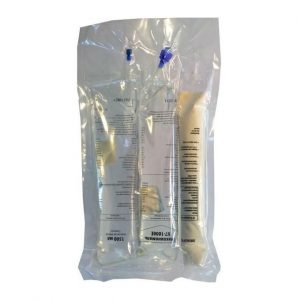Description
Latin name
Aminoven
Packing
10 bottles of 500 ml.
Pharmacological action
Aminoven – a drug for parenteral nutrition (amino acid solution).
Aminoven amino acids that are part of the drug are natural physiological components. After parenteral administration, they are included in the pool of free amino acids of the body and participate in all metabolic processes, in particular, are used for protein synthesis.
The concentration of free amino acids in blood plasma and cytoplasm of cells is regulated within a narrow range depending on age, nutritional status and general condition of the patient. When administered correctly (slowly and at a constant speed), Aminoven does not upset the balance of amino acids.
Indications
Complete or partial parenteral nutrition.
Contraindications
impaired amino acid metabolism
metabolic acidosis,
renal failure in the absence of hemodialysis or hemofiltration
severe liver failure
fluid overload
shock
hypoxia
decompensated heart failure
infants and children up to 2 years old.
Composition
Active substances: L-isoleucine – 5 g L-leucine – 7.4 g L-lysine acetate – 9.3 g, which corresponds to the content of L-lysine 6.6 g L-methionine – 4.3 g L-phenylalanine – 5.1 g L-threonine – 4.4 g L-tryptophan – 2 g L-valine – 6.2 g L-arginine – 12 g L-histidine – 3 g L-alanine – 14 g glycine – 11 g L-proline – 11.2 g L-serine – 6.5 g L tyrosine – 400 mg taurine – 1 g
Excipients: glacial acetic acid (to maintain pH), water d / and.
Dosage and Administration
Intravenously. Aminoven 10% should be entered only in the central veins.
Children from 2 years:
Aminoven – average daily dose: 10-20 ml / kg.
Adults: Aminoven 10% – average daily dose: 10-20 ml Aminoven 10% per kg (1.0-2.0 g of amino acids per kg of body weight).
Side effects
Unknown if used correctly.
Side effects that develop with an overdose are usually reversible and disappear when the drug is discontinued.
Any infusion into the peripheral vein can cause irritation of the vessel wall and thrombophlebitis.
Drug Interactions
Currently, cases of interaction are unknown.
Due to the increased risk of microbiological contamination and incompatibility, amino acid solutions should not be mixed with other drugs not intended for parenteral nutrition.
Aminoven can be mixed with Dipeptivenom, strictly observing the rules of asepsis. Do not add other drugs to the mixture.
Overdose of
In case of overdose of Aminoven or if its infusion rate is exceeded, chills, vomiting, nausea, increased excretion of amino acids through the kidneys can be observed.
In case of signs of overdose, the infusion should be stopped immediately. In the future, it may resume at a reduced dosage.
Too fast infusion can cause the patient to overload the fluid and imbalance in electrolytes.
There is no specific antidote for overdose. Emergency measures should be of a general supportive nature, with particular attention to the function of the respiratory and cardiovascular systems. Of great importance is the control of biochemical parameters and the appropriate treatment of the identified disorders.
Storage conditions
At a temperature not exceeding 25 ° C (do not freeze).
Form of Treatment
simply entails dlya infusing
Appointment
Adult by doctor’s appointment, Prescription children
Indications
Gum disease, Inflammation of the mouth, Sore throat, Laryngitis, Gripplitis, Diffref, 38, Diffref, Tp71
Possible product names
Aminoven 10% 500 ml No. 10 fl
AMINOVEN 10% 500ML N10 FLAC RR D / INF
Aminoven 10% rd d / inf. 500ml (health care facility) X10 B (R)
AMINOVEN RR D / INF. FL 10% 500ML No. 10
AMINOVEN RR D / INF. FL 10% 500ML No. 10 (03.09)
Fresenius Kabi, Germany




